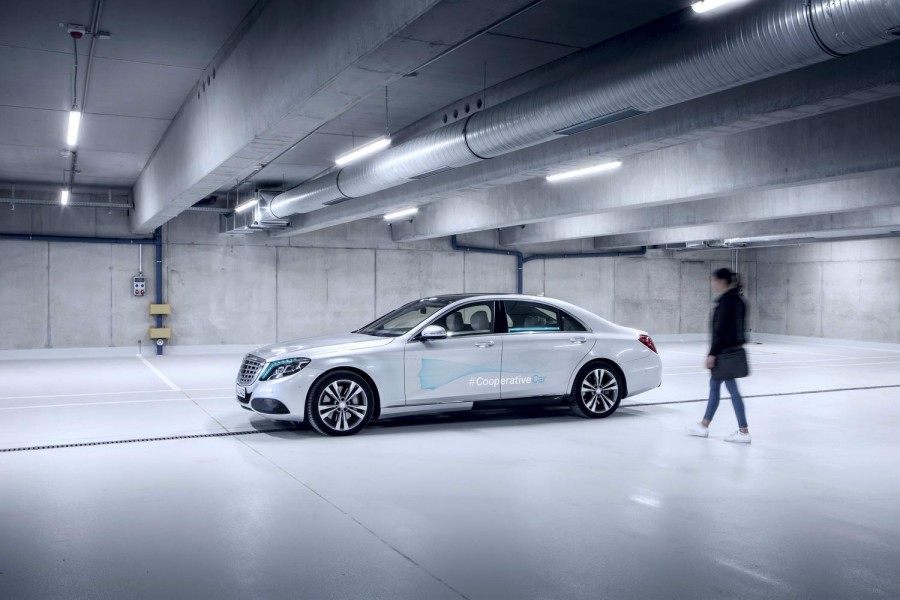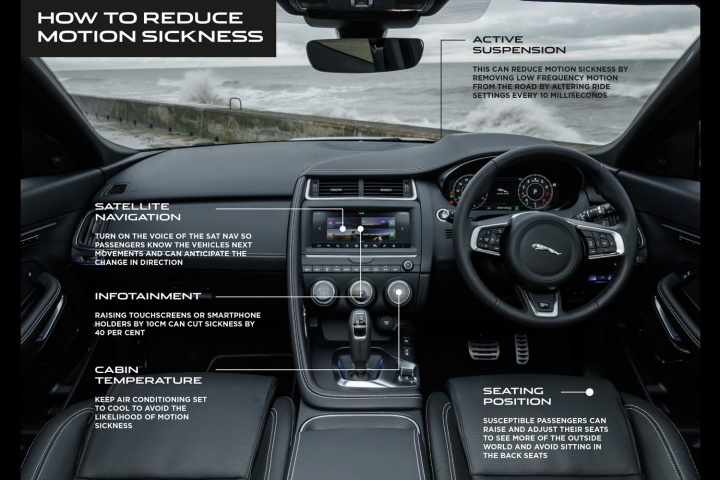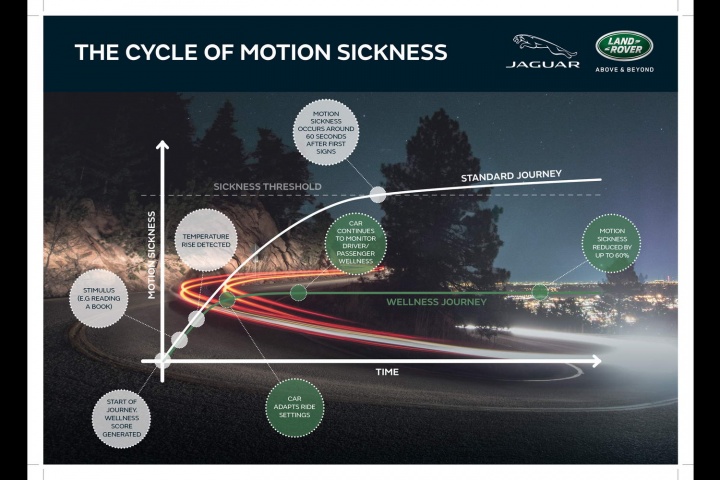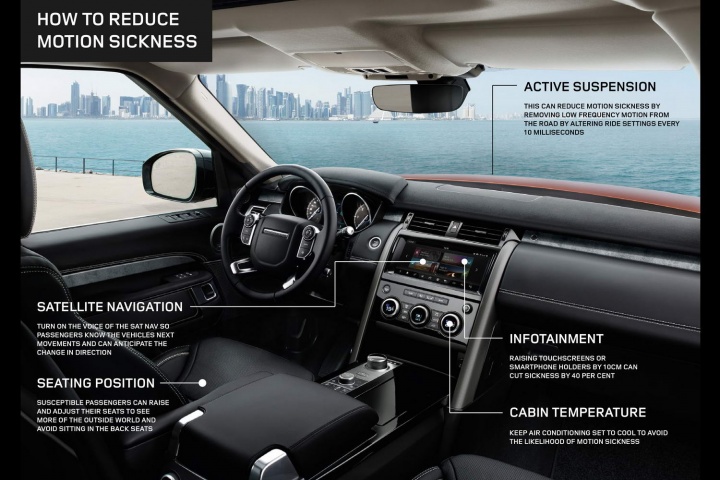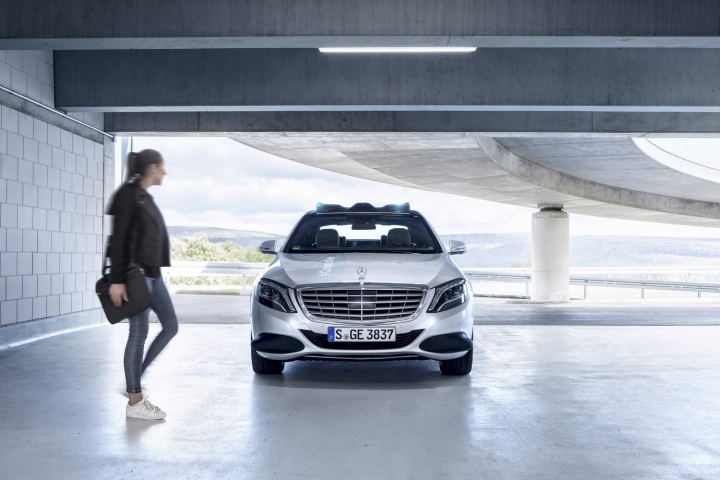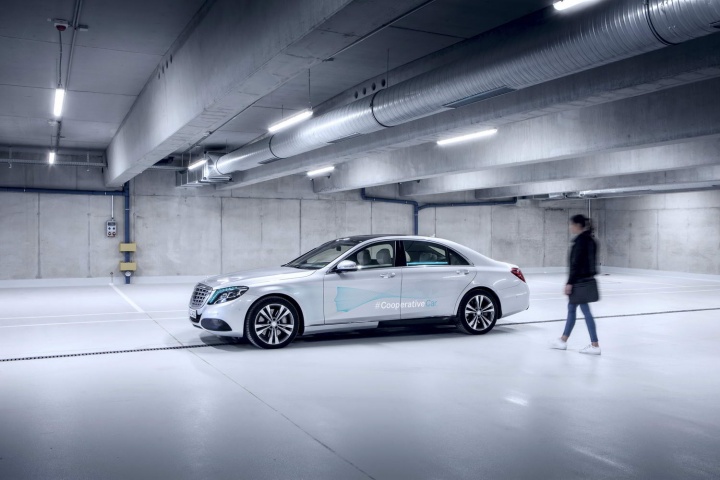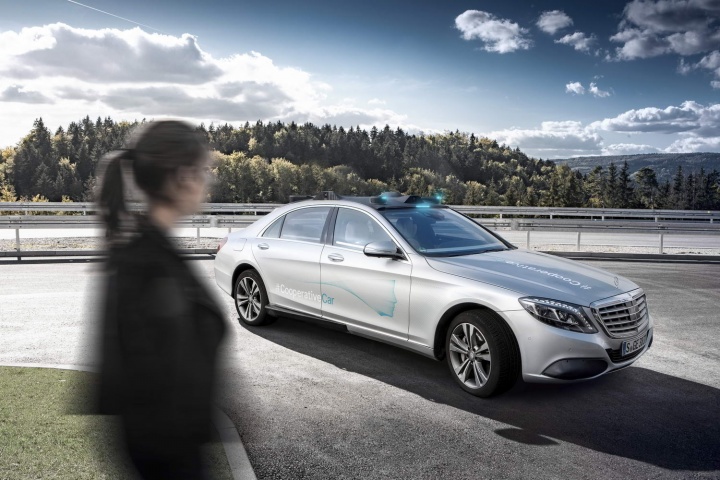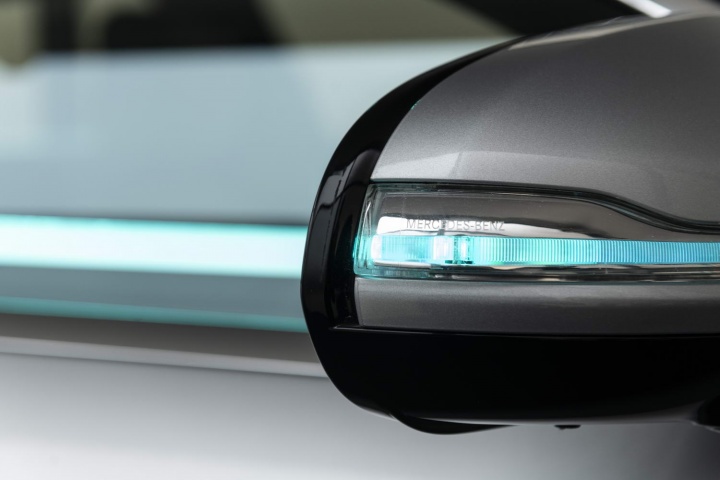You know that sensation you get, watching another car, whereby you can read its body language? Whether as a pedestrian yourself, or from behind your own wheel, you just get a feeling of how, when and in what direction another car is going to move, and that's a feeling often reinforced by making eye contact with the driver.
That eye contact can be crucial, especially to pedestrians. Drivers are ever unpredictable from a walker's point of view, but eye contact means that at the very least, you both know where the other is and have acknowledged the other's presence. That sort of instant, wordless, soundless, instinctive communication is going to be crucial for autonomous vehicles, once they begin to populate our streets. Quite when that will be is the immortal piece of string, the length of which so many are trying to divine right now, but the likes of Mercedes, Toyota, Volkswagen and Jaguar are all working on concepts for how a self-driving car can make 'eye' contact with human pedestrians, mostly because any humans on board will be far too distracted by their phones, the in-car displays, or the inside of their eyelids to do so.
"At Mercedes-Benz, we are convinced that the digital transformation can only be designed successfully if it is deeply anchored within society. Humans and access to data must be at the heart of a digital transformation," says Jasmin Eichler, head of research future technologies at Daimler AG, the parent company of Mercedes. "That is why we are also working on solutions in the field of digitalisation which place the freedom, decision-making autonomy and individuality of human beings at their centre. We aim to create a balance between humans and technology. The approach we are following here is 'Human first'."
Mercedes is taking an approach that, for fans of the TV series Battlestar Galactica, might look a touch uncomfortably Cylon-like. Mounted to the roof and lights of a prototype 'co-operative' S-Class saloon is a bank of turquoise LED lights. If those lights are slow flashing, it means that the vehicle is braking. A stationary light shows that the vehicle is in autonomous driving mode, regardless whether it is driving or at a standstill. The lights on the roof also follow the movements of people at the side of the road and in front of the vehicle to signal that the vehicle is aware of their presence. In doing so, the cooperative vehicle recreates the natural eye contact that would have taken place between the driver and pedestrians. Rapid flashing indicates that it is about to move off.
Full 360-degree light signalling is particularly important when it comes to keeping pedestrians informed. This finding is the result of several light studies that Mercedes-Benz has conducted at its test facility in Sindelfingen, as well as at the recently opened site in Immendingen under the direction of Stefanie Faas from Daimler's Innowerkstatt (innovation workshop). The research looked at how pedestrians react to different signalling autonomous vehicles in various traffic situations.
It became clear that light signalling has a strong effect on the acceptance of autonomous driving vehicles, as well as on how safe pedestrians feel. In particular, people wish for light signalling in situations where there was before interaction with the driver. For example, people are used to seeking eye contact with a driver when they wished to cross the road. If light signalling is communicating that a vehicle is in the autonomous driving mode, pedestrians can feel safe even if the vehicle occupants are obviously not paying attention to what is happening in traffic. Most participants in the study preferred turquoise as the signalling colour.
It's not just down to colour and light patterns - Mercedes says that it's taking inspiration from the communication between humans and animals, which is by necessity based entirely on body language and eye contact. So the new co-operative S-Class was designed around the principle of SLAP, or 'See Like A Pony' - with the help of cameras, "SLAP" puts the researchers in the position to see the world from a pony's perspective and in that way allows them to learn how they behave with humans. A familiar example is that horses show attention by the direction of their ears. This knowledge of attention helps considerably when interacting with the animals. The findings gleaned from that can be transferred to the design and technology of self-driving cars whereby their sensory attention can be made externally visible and can, therefore, be comprehended.
Jaguar Land Rover's solution appears to be gigantic, anthropomorphic, googly eyes. We're honestly not sure whether this is reassuringly comical, or properly terrifying.
According to Jaguar, this sort of development is vital, as 63 per cent of pedestrians worry about how safe it will be to cross the road in the future. The concept of a car 'looking' at you is not quite new - both Volkswagen and Toyota have shown concept cars with LED lights at the front that can mimic the effect of eyes, and which can even replicate the effect of a smile or a wink, but Jaguar's idea goes much, much further.
"It's second-nature to glance at the driver of the approaching vehicle before stepping into the road. Understanding how this translates in tomorrow's more automated world is important. We want to know if it is beneficial to provide humans with information about a vehicle's intentions or whether simply letting a pedestrian know it has been recognised is enough to improve confidence" said Pete Bennett, future mobility research manager at Jaguar Land Rover.
The trials of the googly-eyed pod are taking place in Coventry, and are part of a wider study exploring how future connected and autonomous vehicles can replicate human behaviour and reactions when driving. As part of the study, more than 500 test subjects have been studied interacting with the self-driving pods, designed by Jaguar Land Rover's partner on the project, Aurrigo.
Incidentally, Jaguar claims that it has made a breakthrough in one potentially serious aspect of autonomous motoring - controlling motion sickness.
According to Jaguar, 70 per cent of people suffer from motion sickness and yet; "little has been known about the causes and how to mitigate them."
The car maker has carried out a series of tests, including 24,000km of test driving, to try and divine the secrets of motion sickness, and the sort of vehicle movements that cause it. That data is now being turned into an algorithm that can monitor a passenger's reactions to movements and their so-called 'wellness' and adjust the car's driving style accordingly. It will be included in automated and autonomous driving software, and Jaguar claims that it can reduce the effects of motion sickness by as much as 60 per cent.
"As we move towards an autonomous future where occupants will have more time to either work, read or relax on longer journeys, it's important we develop vehicles that can adapt to reduce the effects of motion sickness in a way that's tailored to each passenger," stated Jaguar's 'wellness technology researcher,' Spencer Salter.
Jaguar claims that its biometric sensors can detect when someone is becoming car sick even before they know themselves. "This cutting-edge research has created a solution that, with its solid scientific foundation, can make travelling enjoyable, regardless of your susceptibility to motion sickness. As a parent of young children, who are most susceptible to car sickness, I am particularly excited by the benefits this research can have in making long journeys comfortable and stress-free for families," explains Dr. Steve Iley, Jaguar Land Rover's chief medical officer.

